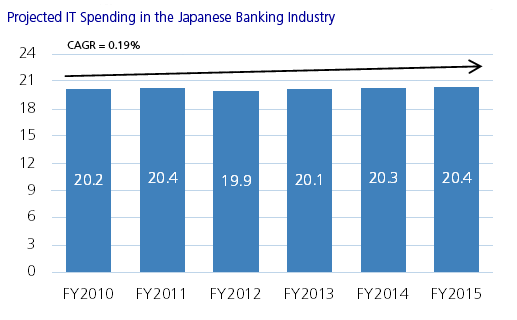IT Spending Trends in the Japanese Banking Industry 2011
Abstract
Just as Japan's banking industry seemed to be turning a corner from the 2008 financial crisis, the Great East Japan Earthquake struck, injecting an element of uncertainty. However, Japan’s banking industry has been formulating new strategies for growth.
In a new report, IT Spending Trends in the Japanese Banking Industry 2011, Celent examines IT investment patterns based on business trends in Japan’s banking industry. Celent forecasts that technology investments by Japanese banks will remain largely flat over the middle term, hovering around US$20.4 billion from fiscal 2011 through fiscal 2015 for a compound annual growth rate of 0.19%. The factors which will flatten IT spending of Japanese banking industry include stagnation of the Japanese economy and Japanese banking industry and a requirement for high cost efficiency.

“While no major growth in IT spending is foreseen for the banking industry, the sector is positive about harnessing new technologies, focusing attention on changes in spending patterns,” says KyongSun Kong, an analyst with Celent's Asian Financial Services group and author of the report.
In this report, Celent analyzes market and IT trends in the Japanese banking industry, and offers proposals and strategies to help banks and vendors capitalize on these trends in the future.

